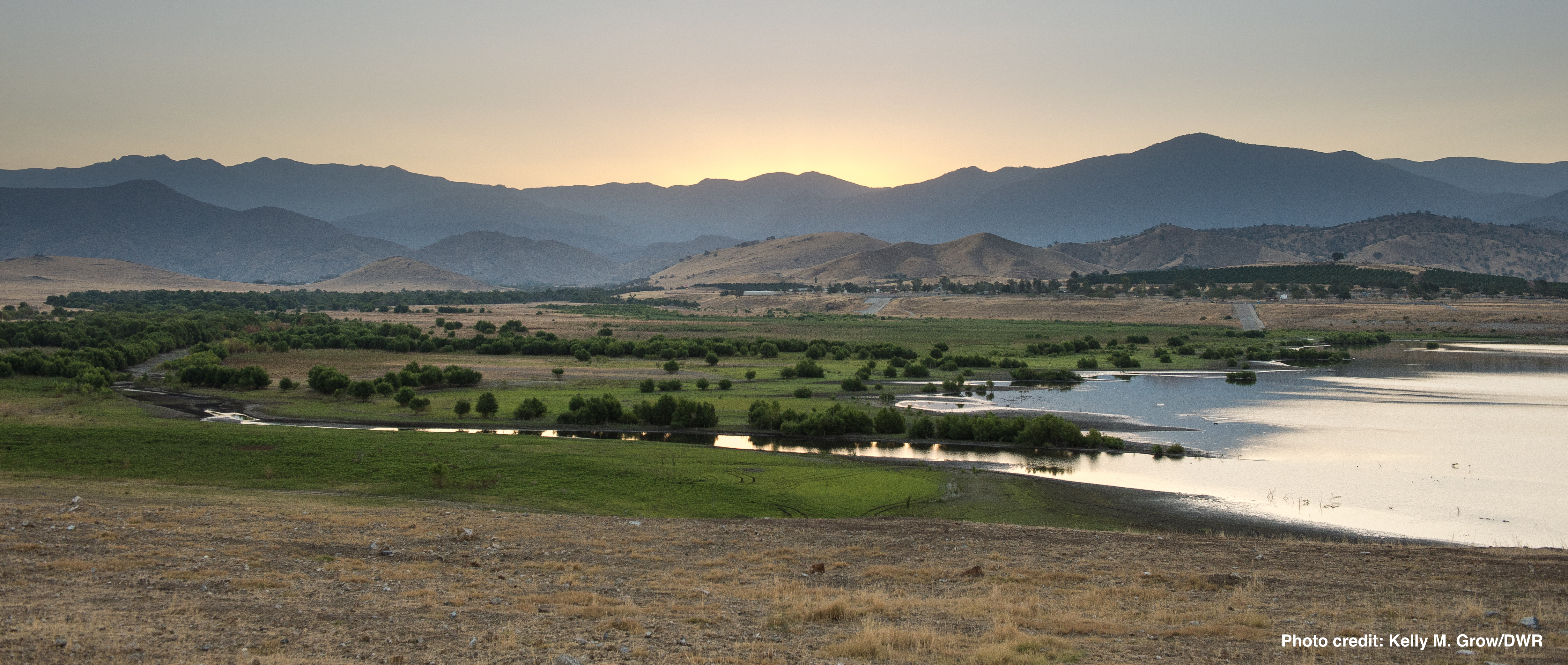November 30, 2017 | Water in the West | Insights
In California, the past few years have provided a glimpse of our climate future—a 5+ year drought coupled with severe, increasingly intense wildfires punctuated by one of the wettest winters on record. With more frequent and extreme events expected in the future, the state will face new challenges to the collection, storage, and use of water resources.
In 2014, California passed the Sustainable Groundwater Management Act that requires newly formed agencies to write plans to sustainably manage groundwater. In a recent report, researchers noted that the agencies will not only need to look at historical water use when creating their management plans, but will also need to incorporate climate change. Those same considerations will need to be applied to surface water management and infrastructure around the state. But understanding how climate change will impact California’s water supply in the future is no small task.
Climate models are a key tool to help explain and make predictions about what changes can be expected in California and around the world. In order to find out more about exactly how these models work and what we can learn from them, we sat down with Julio E. Herrera Estrada, a post-doctoral scholar in Stanford’s Department of Earth System Science in the School of Earth, Energy and Environmental Sciences.
What is the difference between climate and weather?
Weather refers to short term (daily to weekly) variations in atmospheric conditions (e.g. temperature, precipitation, etc.) and climate refers to the average weather over a long time period (decades to centuries). For example, at Stanford, tomorrow it may be a few degrees warmer or cooler than today (i.e. different weather), but it has been significantly cooler and drier than Miami on average throughout the past decades (i.e. a different climate). In between weather and climate, we have seasonal patterns, and some variability from year to year and decade to decade. Phenomena like El Niño and La Niña are complex climatic patterns, for example, that take place every few years.
How do climate models work?
Climate models are computer models that combine many mathematical equations to simulate the key processes that affect the climate system. Contrary to what it may be commonly believed, the climate system does not only include the atmosphere, but also the ocean, land, and sea ice, as well as humans, animals, and plants. Thus, the mathematical equations in climate models represent a mix of processes that take place over long distances (e.g. how the air flows around the planet) and locally (e.g. evaporation over soil, transpiration from plants, and surface runoff). Many models also include chemical reactions that happen in the atmosphere, and biological processes and human activities that occur over land. The goal has been to build models that resemble our planet as much as possible so that we can use the results from our experiments using such models to make meaningful conclusions about the real world.
What can the general public can learn from climate models?
The general public benefits from climate models every day, since we use them to make seasonal forecasts. They can help us predict when a drought may start, as well as how it will evolve, and when drought conditions may recover. We also use climate models to understand how human activities such as large-scale agriculture, burning fossil fuels, and deforestation affect the climate system over a given region or over the entire planet. It is thanks to climate models that we have an idea of how temperature and sea levels are rising because of climate change, and that we can estimate how much more they will both continue to rise throughout the century. We can also use climate models to answer other science questions such as what causes phenomena like El Niño and La Niña, what are the impacts of these phenomena around the world, and what has caused deserts around the world to change over the past millennia, to name a few.
How reliable are current climate models?
It depends on what questions you want to answer. Climate models are tools that help us understand how our planet’s climate system works, since it is not feasible to run experiments with our entire planet. However, like any physical or mathematical tool, it is important to understand what climate models were designed to do and what they are useful for. Using a tool in a way that it is not designed to be used will lead to wrong or meaningless results.
Climate models have improved over the past several decades as they include more and more processes, and as they increase the resolution at which they simulate the planet, providing more detailed insights over a given country or region. Climate models represent many processes, some of which we understand better than others. For example, we have a good understanding of the science behind rising global temperatures caused by increasing greenhouse gas emissions. On the other hand, modeling rainfall is more challenging because understanding how clouds form is an active area of research and most models do not simulate individual clouds. This doesn’t mean that we cannot use climate models to study trends in precipitation, just that the associated uncertainty will be larger.

Lake Success in Porterville, California
What are the most significant impacts from climate change in the American West with respect to water supply?
Four of the main predicted impacts regarding water resources over the American West are the decrease in precipitation during the year, the snow to rain transition, increase in evapotranspiration, and increase in streamflow temperature. Lower precipitation over the year will make the soils drier on average, and may also reduce the total amount of water that flows into rivers and reservoirs. The snow to rain transition will lead to large amounts of rainfall runoff during the rainy season, which can cause flooding. This will be followed by drier periods during the rest of the year since there will be less (or no) snowmelt to continue supplying water during the spring and early summer. Furthermore, rising temperatures will increase evaporation from reservoirs leading to further losses of water resources, and will also increase transpiration from plants, such that more water may be needed for irrigation in agriculture. All of this will likely increase the demand for groundwater resources to a point that we will extract it at unsustainable rates. Finally, increasing temperatures will likely lead to increases in streamflow temperatures, which can reduce electricity generation from thermoelectric power plants by lowering their efficiencies, and cause negative impacts in river ecosystems.
How can water managers use climate models when making future decisions about water use?
Water managers can use climate models to answer several questions that can help them make plans to increase their resilience to climate change. How is snowfall as a fraction of total precipitation expected to change throughout the century? How is the distribution of rainfall throughout the year and the intensity of each storm expected to change? How much water will be increasingly lost to evaporation due to increasing temperatures? How may streamflow temperatures increase in the future? How often are we expected to experience drought conditions, and how will droughts change in terms of severity and duration? And for all these questions, what are the uncertainty bounds in the projections as we understand them?
Water managers can use the answers to these and other questions to decide if they need to change their operations of water releases in dams and reservoirs, and to estimate how water demand from agriculture, industry, and cities may change over the next few decades. These answers can also help them assess if the existing infrastructure is capable of coping with the expected changes, and if not, what investments may be necessary to enhance our capacity.


![[Woods Logo]](/sites/default/files/logos/footer-logo-woods.png)
![[Bill Lane Center Logo]](/sites/default/files/logos/footer-logo-billlane.png)